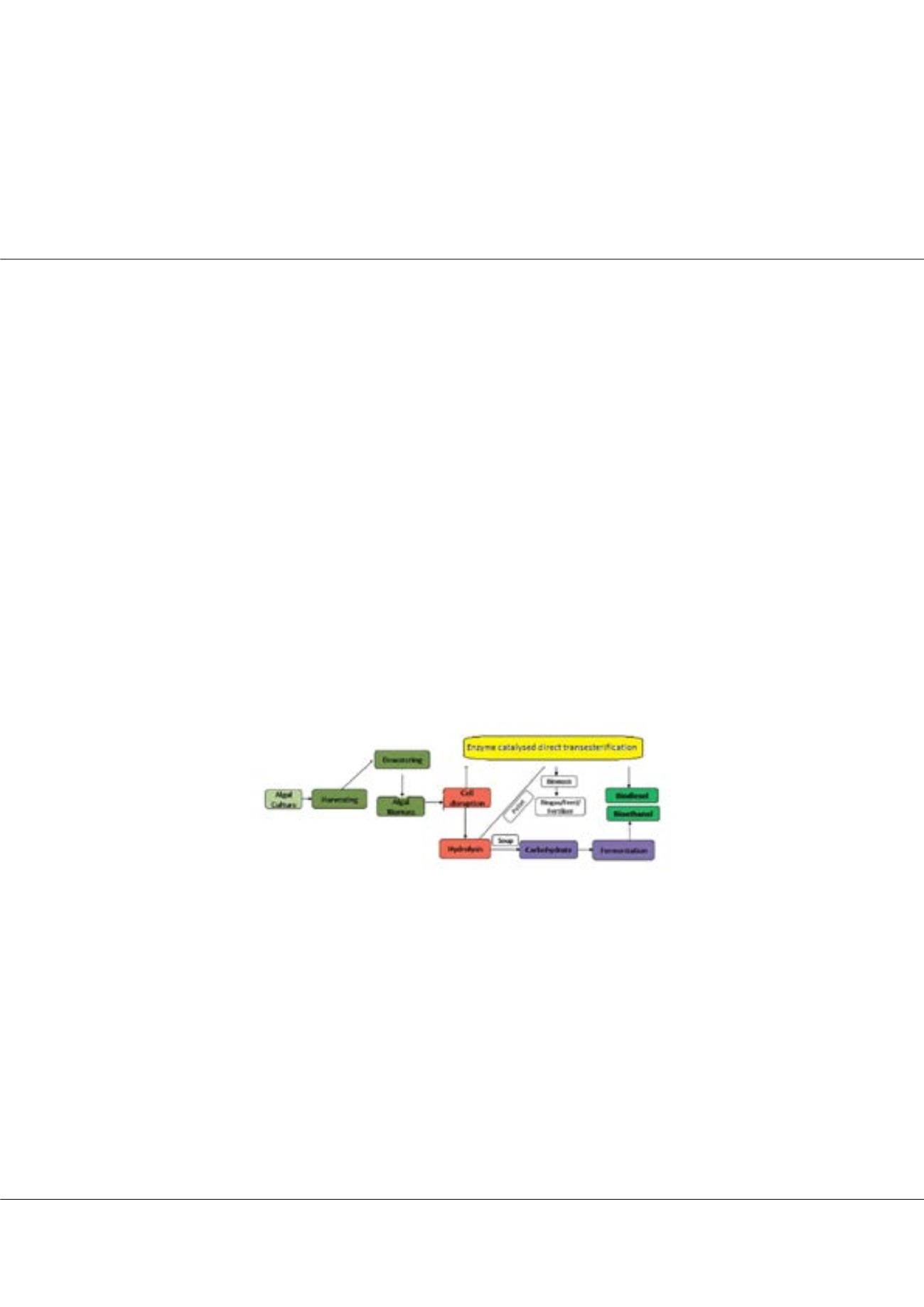

Page 60
Notes:
conferenceseries
.com
Volume 8, Issue 5 (Suppl)
J Bioremediat Biodegrad, an open access journal
ISSN: 2155-6199
Biofuels Congress 2017
September 05-06, 2017
September 05-06, 2017 | London, UK
Biofuels and Bioenergy
6
th
World Congress on
Biorefinery approach of microalgae feedstock for the production of bioethanol and biodiesel
Ramachandran Sivaramakrishnan
and
Aran Incharoensakdi
Chulalongkorn University, Thailand
T
he continued use of fossil fuels depletes the reserves; more than 75%of petroleumbased fuels are burnt in the transportation
sector. The utilization of global energy is expected to be increased in the future due to increased population and demand.
Therefore, there is a need for alternative fuel, which is not only satisfying the need, but also solving the environmental
problems. Microalgae feedstocks, a reliable biofuel source, have drawn much attention as an alternative and renewable. This
is due to the microalgal species have the excellent photosynthetic efficiencies and the biomass reproducibility potential than
any other terrestrial crops. In this study the integrated approach of ethanol and biodiesel production from algal biomass has
been proposed. This integrated method is to develop the microalgae based biorefinery model. The present study focuses on the
biorefinery approach of integrated production of bioethanol and biodiesel from microalgae feedstock. Various pretreatment
methods were used to determine the maximum recovery of sugars from
Scenedesmus
sp. The total sugar yield of 84% was
obtained when pretreated separately by acid hydrolysis. The hydrolysate produces 90% of ethanol (theoretical yield) after the
fermentation. Enzyme catalyzed ultrasound assisted direct transesterification of biomass was performed and the maximum
of 91% methyl ester yield, 2.6% glycerol carbonate and 5.6% glycerol dicarbonate was obtained. The integrated process of
initial acid hydrolysis produces 84% of total sugar. The sugar extracted biomass was initiated with enzyme catalyzed direct
transesterification with ultrasound irradiation. The obtained hydrolysate was further fermented with S. cerevisiae and at the
optimized conditions of fermentation 90%of ethanol (theoretical yield) was obtained.The conditions of direct transesterification
using enzyme were optimized and produces 89% of biodiesel yield with 2.1% glycerol carbonate and 4.9% glycerol dicarbonate.
Thus, the microalgal biomass efficiently produces both ethanol and biodiesel as well glycerol carbonate, which could be the
biorefinery model for sustainable future development.
Biography
Ramachandran Sivaramakrishnan has been working in the production of biofuels from microalgae. He is working as a Post-doctoral researcher in the Department
of Biochemistry, Chulalongkorn University. His Doctoral studies were about methyl ester production from macroalgae using lipase catalyst. He has been awarded
as Junior Research Fellow by Department of Science and Technology, India. He has published five research articles in international journals.
rsrkbiol@gmail.comRamachandran Sivaramakrishnan et al., J Bioremediat Biodegrad 2017, 8:5(Suppl)
DOI: 10.4172/2155-6199-C1-008
















